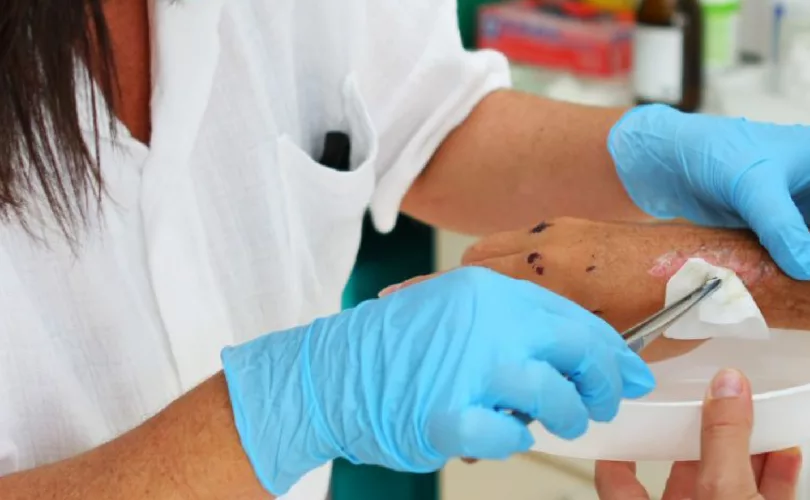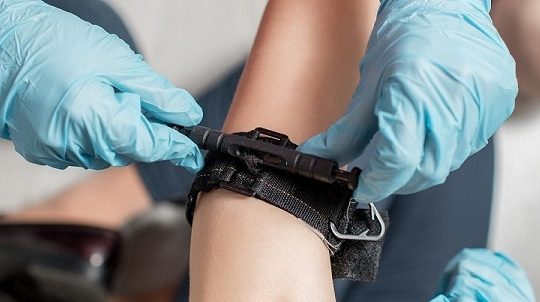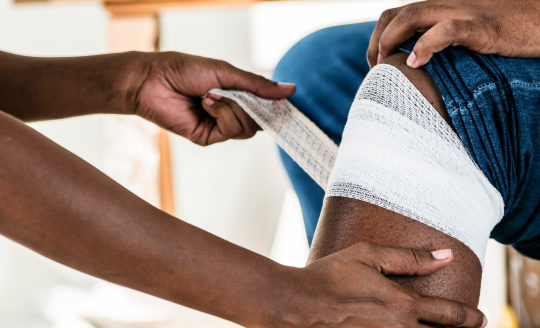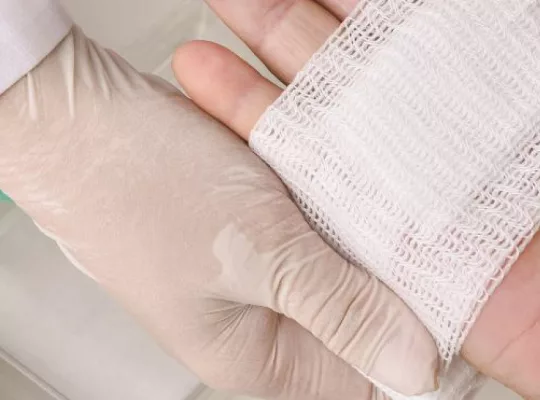There are lots of scenarios in life which seem harmless but could result in you or someone around you sustaining a wound. You could cut yourself whilst preparing a meal.
You could fall and sustain a laceration whilst out running or playing sports, or your child could hurt themselves when playing in the yard. Wounds are a part of everyday life, so it is important that you know how to take care of them properly.
Proper care of a wound will help to prevent infection, speed up the healing process, and may even reduce the chance of scarring. Keep reading to find out what steps you should take to care for a wound.
What Is A Wound?
A wound is typically described as any injury that causes a break in the skin. This can include scratches, abrasions, lacerations, burns, ulcers, piercing injuries, and more. They can happen in any number of circumstances and range in severity.
The basic principles of wound care apply to all wounds, but before you begin to care for any wound you should consider whether medical attention is needed.
If a wound is severe it could be life threatening, or there might be other injuries alongside it that require professional help such as a broken bone.
The 7 Steps Of Wound Care
Here are the 7 steps that you should follow when it comes to caring for a wound.
Step One – Wash Your Hands
Once you have an open wound on your skin, it is very easy for bacteria and other contaminants to enter your body and your bloodstream. This can cause infection, prevent the wound from healing and lead to their possible health complications.
Before you begin to treat a wound, it is very important to wash your hands thoroughly with soap and water. You can also apply a hand sanitizer if you have any.
It is worth noting that if you have any open cuts or wounds on your hands – even if it is just a papercut on your finger – you should wear gloves before coming into contact with the open wound of someone else.
Step Two – Stop The Bleeding
It is very difficult to care for a wound while it is still bleeding, and it is not good for the patient or injured person if they lose a lot of blood. There are two main things you need to do to help stop the bleeding – apply pressure, and elevate the wound.
Use a clean cloth or any piece of clean material to apply pressure to the wound, and raise the area of the wound above the level of the injured person’s heart. For example, if the wound is on the ankle or leg then use a pillow or a chair to elevate the leg higher than their chest.
This makes it harder for the heart to pump blood to the area of the wound, slowing down the bleeding.
Step Three – Sterilize The Wound
This is one of the most important parts of wound care, and is a vital step if you want to prevent infection. The wound must be clean or it may not heal properly. Check to make sure that there is no debris in the wound such as gravel, dirt or glass.
If you see debris, you can remove it very gently with sterilized tweezers, or seek medical help. Removing large pieces of debris can worsen the wound if done incorrectly, so you might need medical attention for this.
Once the wound is free of debris, clean it with running water for several minutes. You can use soap on the area surrounding the wound, but you should not use soap in the wound. You can also use a saline solution to clean the wound (salt dissolved in water).
You should boil the water and let it cool to remove any bacteria. You can dip a clean cloth or some gauze into the saline solution and use it on and around the wound. It is not advisable to use antiseptic liquids to clean the wound, as this can cause damage to the tissue.
Once the wound is clean, you can gently pat it dry with paper towels or a clean cloth, being careful not to leave fibers behind.
Step Four – Antibacterial Ointment
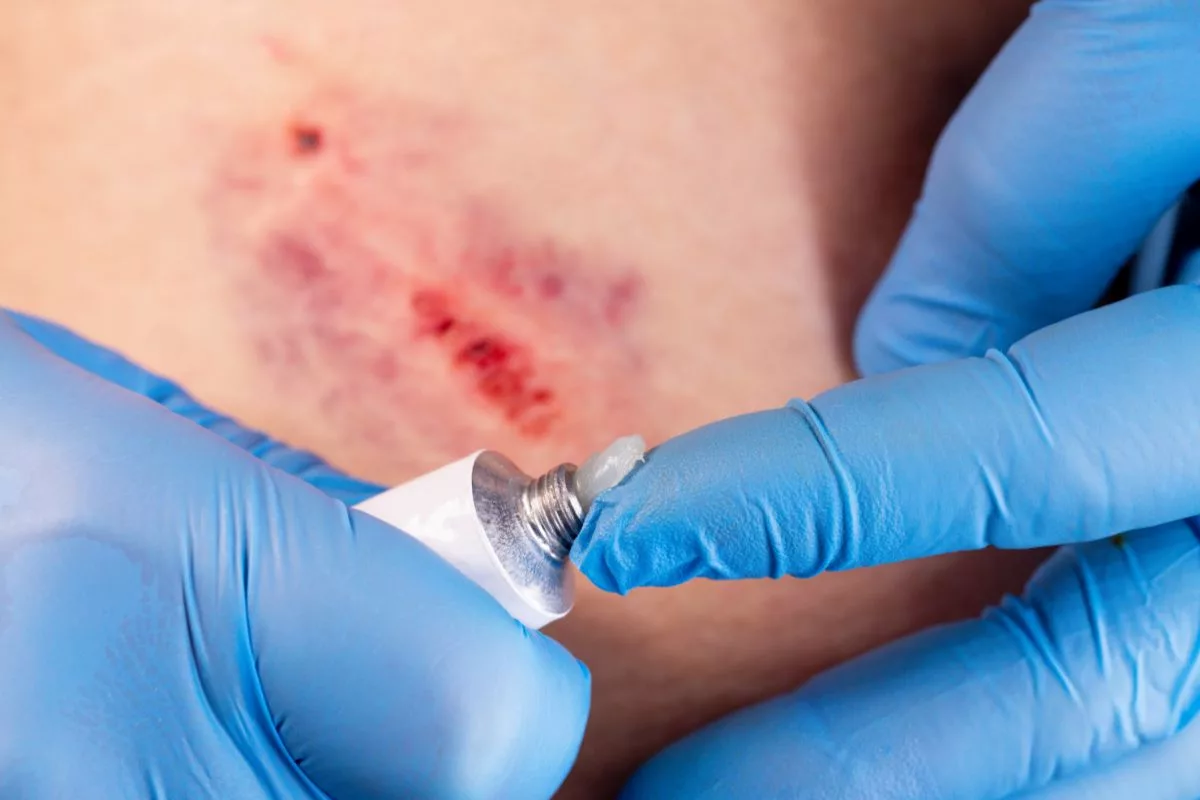
Once the wound is clean and dry, you can apply some antibacterial ointment if you have any. This can help to prevent the wound from becoming infected. These ointments are available over the counter and there are lots of different brands to choose from.
If you don’t have any antibacterial ointment or cream then you can skip this step. As long as the wound was cleaned properly and is kept clean going forward, it should not become infected.
Step Five – Dress The Wound
The wound will need to be protected while it heals. Using a dressing prevents the wound from being disturbed by knocks or further scrapes, and it helps to keep bacteria and contaminants away. The dressing will also prevent fibers from your clothes from sticking to the wound.
A dressing with a pad can help to apply pressure to the wound, speeding up the healing process. There are different types of dressings that you can use depending on the wound. If the wound is very minor and surface level, you could just use an adhesive plaster or a transparent film dressing.
If the wound is still bleeding a little or releasing liquid, you may want to use some gauze or a foam dressing. All dressings should be sterile, and could be held in place with a bandage.
Step Six – Maintenance
Once the initial dressing has been applied, you need to keep up with maintaining the wound care. This involves periodically changing the dressing and cleaning the wound. Be careful when removing the dressing – you should do it gently to avoid causing any further damage to the wound.
Clean the wound gently but thoroughly with a saline solution, and pat it dry before applying the new dressing. The frequency of dressing changes will depend on the severity of the wound and the type of the wound.
If you leave a dressing on for too long it can increase the risk of infection and slow down the healing process.
Step Seven – Monitoring
As the wound heals, you need to monitor it for any signs of infection or causes for concern. The perfect time to do this is when you change your dressing, as you can have a good look at the wound and the healing progress.
You should also pay attention in between dressing changes to any concerning signs. A healthy wound will be red and swollen for a few days, and then the pain will ease and the skin will settle down.
The wound should scab over and you will probably experience some itching as the wound heals. When the tissue is healed, the scab will drop off. If the wound is becoming infected, the redness and swelling will worsen and could spread.
The wound will become more and more painful, and could start leaking discharge or pus. The wound might begin to smell, and the area around it will be tender and warm. If you notice any of these signs, seek medical attention.
Summary
If you or someone around you sustains a minor wound, you can use these steps to care for it. More severe wounds or wounds that could be infected will require medical attention and professional treatment.

